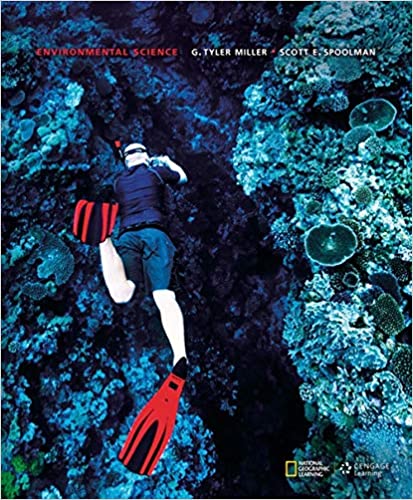
Environmental Science 15th Edition by Scott Spoolman,Tyler Miller
Edition 15ISBN: 978-1305090446
Environmental Science 15th Edition by Scott Spoolman,Tyler Miller
Edition 15ISBN: 978-1305090446 Exercise 13
PERENNIAL POLYCULTURE AND THE LAND INSTITUTE
Some scientists call for greater reliance on polycultures of perennial crops as a component of more sustainable agriculture. Such crops can live for many years without having to be replanted and are better adapted to regional soil and climate conditions than are most annual crops. One scientist who is exploring perennial agriculture is soil expert Jerry Glover, a National Geographic Emerging Explorer. He studies perennial farming systems around the world, working for the U.S. Agency for International Development.
More than three decades ago, plant geneticist Wes Jackson co-founded the Land Institute in the U.S. state of Kansas. One of the institute's goals has been to grow a diverse mixture (polyculture) of edible perennial plants to supplement traditional annual monoculture crops and to help reduce the latter's harmful environmental effects.
Perennial crops, which live for several years, help farmers copy nature by better using and conserving natural resources-sunlight, soil, and water. Because there is no need to till the soil and replant perennials each year, this approach produces much less topsoil erosion and water pollution. It also reduces the need for irrigation because the deep roots of such perennials retain more water than do the shorter roots of annuals (Figure 10.B). Often, there is a reduced need for chemical fertilizers and pesticides, and thus little or no pollution from these sources. Perennial crops also remove and store more carbon from the atmosphere, and growing them requires less energy than does growing annual crops in conventional monocultures.

FIGURE 10.B The roots of an annual wheat crop plant (left) are much shorter than those of big bluestem (right), a tallgrass prairie perennial plant.
Critical Thinking
Why do you think large seed companies generally oppose this form of more sustainable agriculture?
Some scientists call for greater reliance on polycultures of perennial crops as a component of more sustainable agriculture. Such crops can live for many years without having to be replanted and are better adapted to regional soil and climate conditions than are most annual crops. One scientist who is exploring perennial agriculture is soil expert Jerry Glover, a National Geographic Emerging Explorer. He studies perennial farming systems around the world, working for the U.S. Agency for International Development.
More than three decades ago, plant geneticist Wes Jackson co-founded the Land Institute in the U.S. state of Kansas. One of the institute's goals has been to grow a diverse mixture (polyculture) of edible perennial plants to supplement traditional annual monoculture crops and to help reduce the latter's harmful environmental effects.
Perennial crops, which live for several years, help farmers copy nature by better using and conserving natural resources-sunlight, soil, and water. Because there is no need to till the soil and replant perennials each year, this approach produces much less topsoil erosion and water pollution. It also reduces the need for irrigation because the deep roots of such perennials retain more water than do the shorter roots of annuals (Figure 10.B). Often, there is a reduced need for chemical fertilizers and pesticides, and thus little or no pollution from these sources. Perennial crops also remove and store more carbon from the atmosphere, and growing them requires less energy than does growing annual crops in conventional monocultures.

FIGURE 10.B The roots of an annual wheat crop plant (left) are much shorter than those of big bluestem (right), a tallgrass prairie perennial plant.
Critical Thinking
Why do you think large seed companies generally oppose this form of more sustainable agriculture?
Explanation
The following are the three key factors ...
Environmental Science 15th Edition by Scott Spoolman,Tyler Miller
Why don’t you like this exercise?
Other Minimum 8 character and maximum 255 character
Character 255


